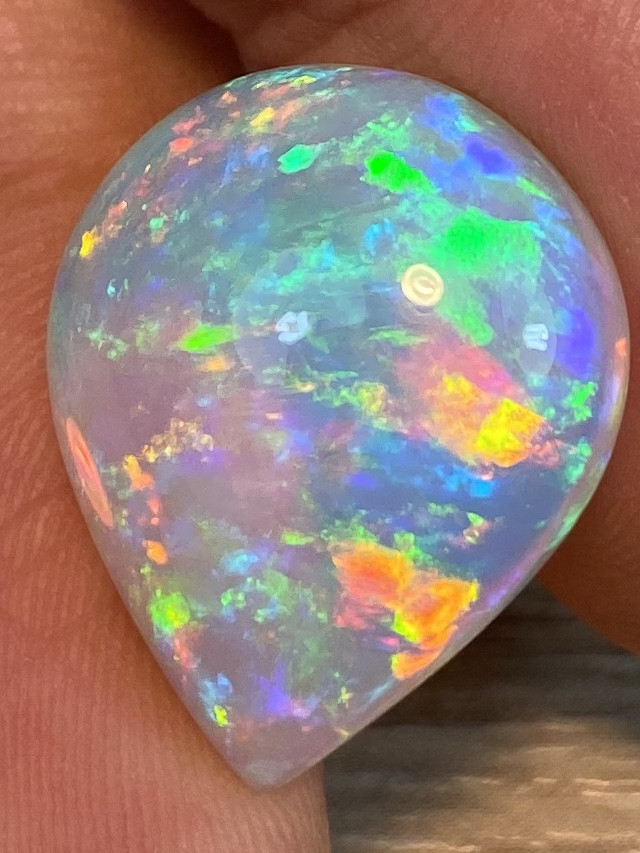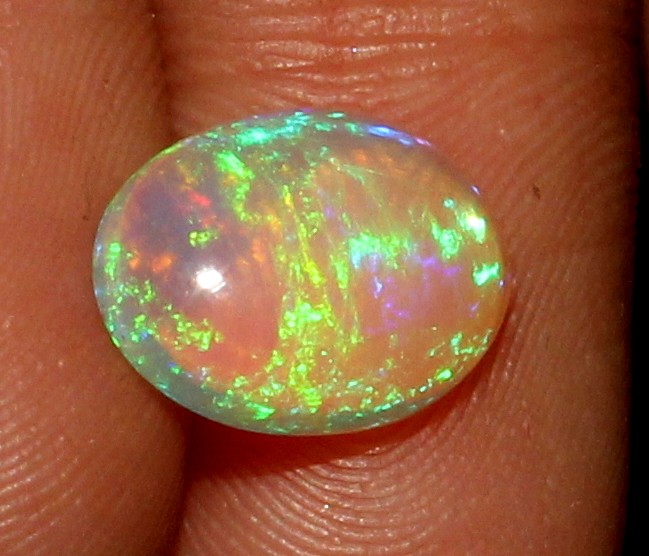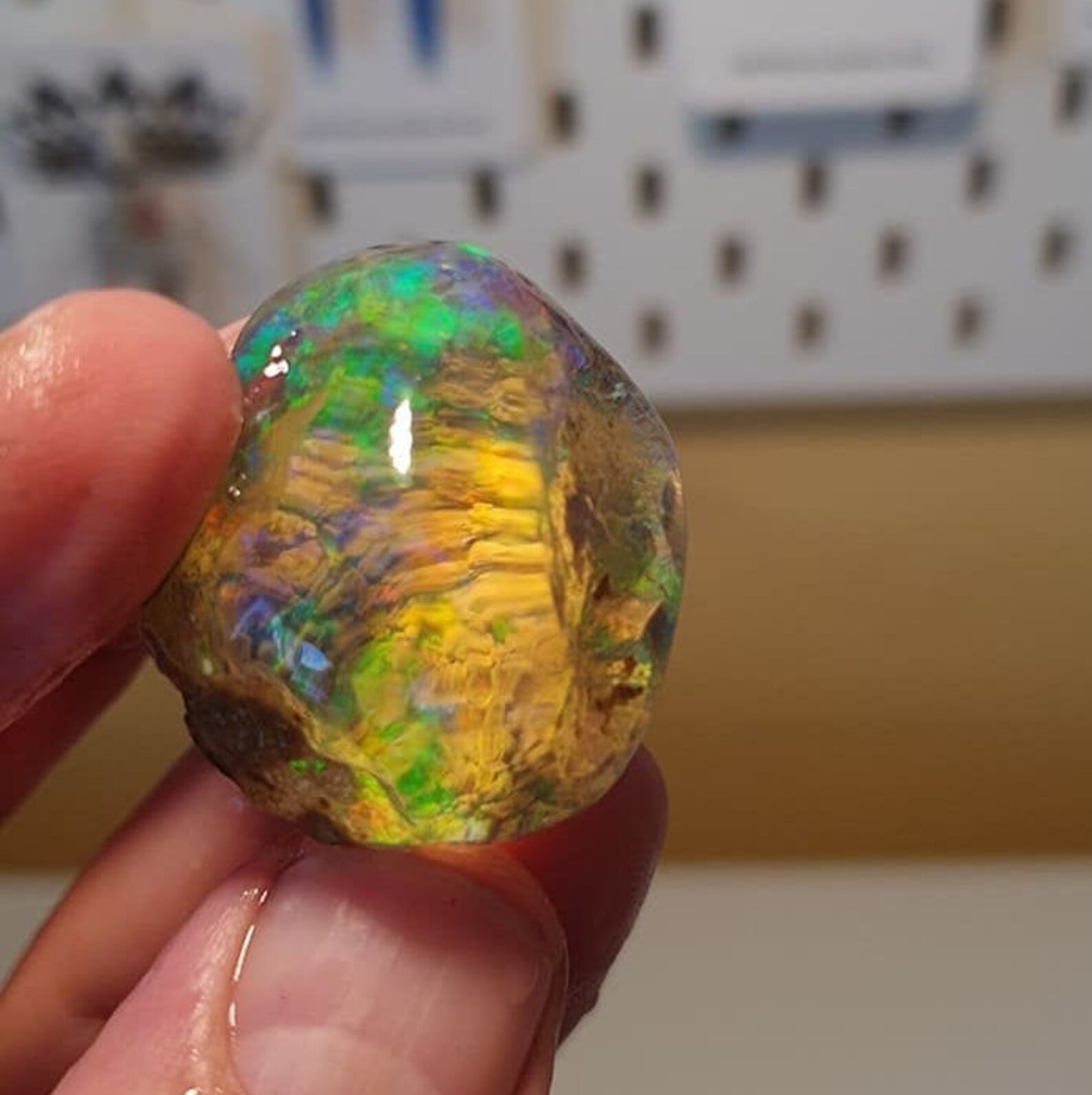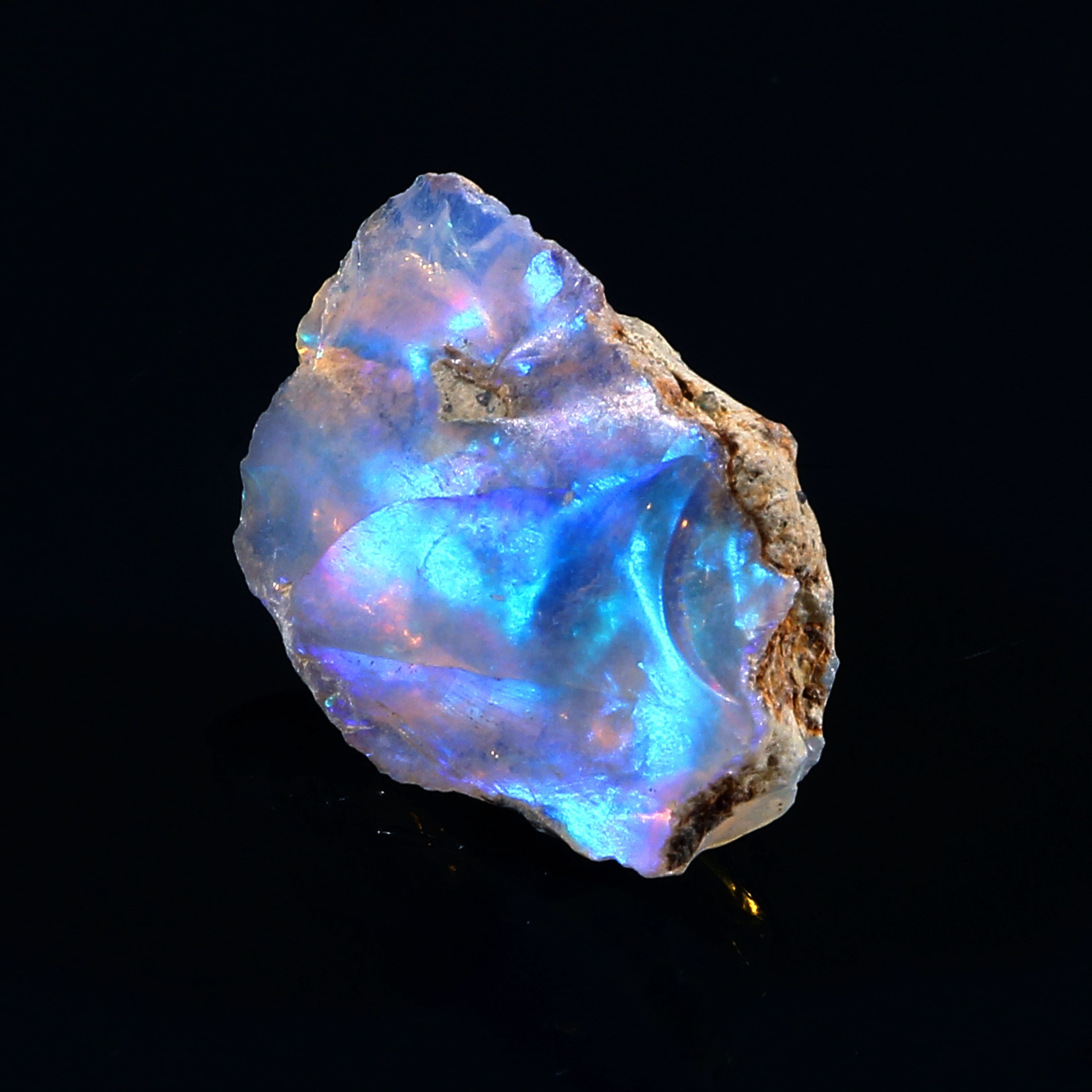


White opals from this deposit contain an elevated Ba content, which has not been reported so far in opal-CT. The opaque-to-translucent Wegel Tena opals become transparent when soaked in water, showing a remarkable hydrophane character. Some samples show “digit patterns”: interpenetrating play-of-color and common opal, resembling fingers. Inclusions consist of pyrite, barium-manganese oxides, and native carbon. However, its properties are consistent with those of opal-CT and most volcanic opals. Some of it resembles Australian and Brazilian sedimentary opals, with play-of-color that is often very vivid. Unlike previous Ethiopian opals, the new material is mostly white, with some brown opal, fire opal, and colorless “crystal” opal.

In general, the results of this study indicates that, even though the study area has a promising opal potential, problems related to marketing system, mining, and value addition practices are serious challenges hindered the surrounding community and the country as a whole not to utilize the resource properly.Ī new opal deposit was discovered in 2008 near the village of Wegel Tena, in volcanic rocks of Ethiopia’s Wollo Province. The results of the study revealed that there are problems which can be categorized into four main categories: mining technique related problems (opal cracking problem due to traditional mining tools, inappropriate handling, and land sliding accidents), market-related problems (such as poor national and international market attachment, meager promotion, unfair market price, corrupted and illegal marketing practices), problems related to value addition (shortage of modern lapidary machines, lack of domestic skills for jewelry production, poor monitoring mechanisms for value addition, low local market price of value-added products and lack of access to sell value-added opal products to the international market and skill gaps of opal cutters) and problems related to lack of environmental impact assessment (deforestation, land degradation and pH change of land soil due to waste disposal). In this study, statistical methods and fishbone diagrams were employed and the data for the study was collected using interviews, focus group discussions, and physical observation. This study aimed to assess the major problems affecting the utilization of opal resources in Delanta district, Ethiopia, and to recommend possible solutions to the main actors of the sector. The authors believe that this technology could also be applied to other natural opals with open pores which could substantially increase the stability of much natural gem opal.Įven if, the Delanta precious opal is promising natural resources for economic development and expansion of gemstone industry, there are serious problems faced in utilization of the resource. These gems were then less susceptible to dehydration and cracking even upon considerable heating.

The treatment was shown to remove the 5-6% mass of water in the pores in Ethiopian opal and to then seal them by impregnation with a silica sol. This article describes the use of some methods developed in this technology with the intention of sealing the porosity in the natural opal from Ethiopia. Previously, the authors developed technology that enables synthesis of opal with closed porosity and chemical composition and physical properties quite similar to natural opal. These defects make many Ethiopian opals unsuitable for use in jewelry. Internal stresses arise upon any dehydration resulting in surface shrinkage and progressive crazing and cracking. This unfortunate effect is associated with an appreciable water content in the open pores of the material. However, these gems are often prone to cracking only with the course of time or just mild heating. Many examples of opals from Ethiopia have a very beautiful play of colors.


 0 kommentar(er)
0 kommentar(er)
